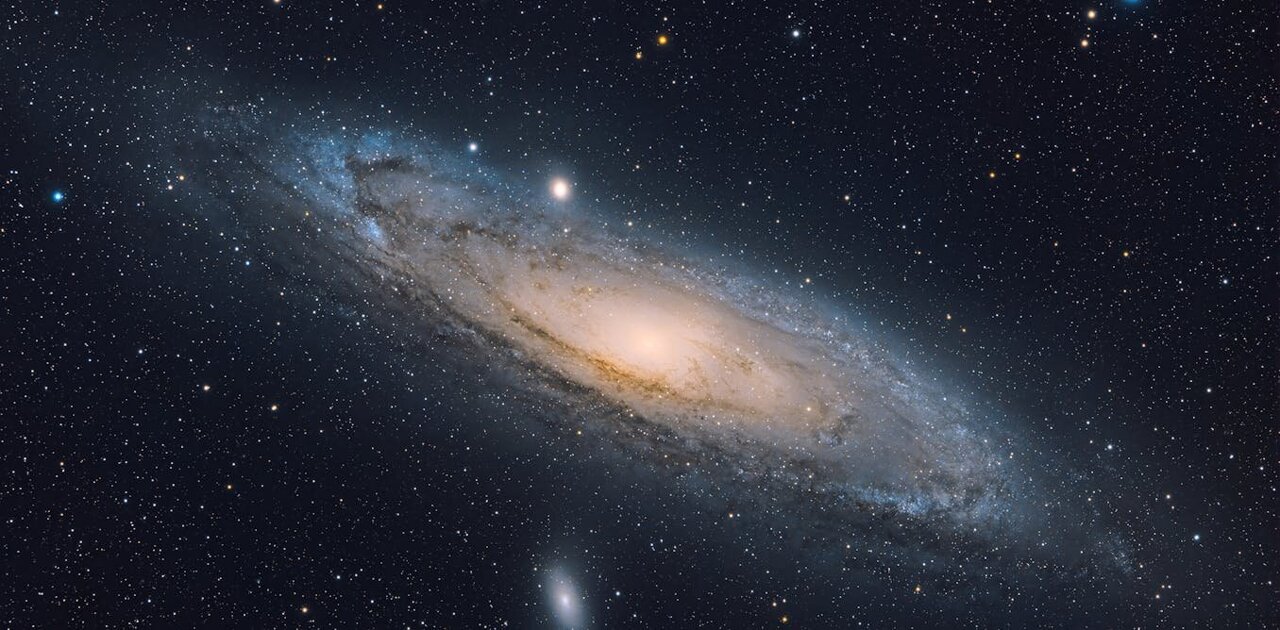
Astronomers thought the Milky Way was doomed to crash into Andromeda. Now they’re not so sure
How did your country report this? Share your view in the comments.
Diverging Reports Breakdown
Astronomers thought the Milky Way was doomed to crash into Andromeda. Now they’re not so sure
Astronomers have predicted a dramatic fate for our galaxy: a head-on collision with Andromeda, our nearest large galactic neighbor. This merger has become a staple of astronomy documentaries, textbooks and popular science writing. But a new study found there is only about a 50% chance the Milky Way and Andromeda will merge in the next 10 billion years. The new study took into account the gravitational effect of the Triangulum Galaxy, which orbits Andromeda. Even if a merger does happen, it’s unlikely to be catastrophic for Earth, as stars in galaxies are separated by enormous distances. But over time, the galaxies would coalesce under gravity, forming a single, larger galaxy—probably an elliptical one, rather than the spirals we see today. If the galaxies don’t merge, they may settle into a long, slow orbit around each other—close companions that never quite collide. It’s a gentler outcome, but it still reshapes our understanding of the Milkyway’s distant future. But exploring these possibilities shows just how much we’re still learning about the universe.
For years, astronomers have predicted a dramatic fate for our galaxy: a head-on collision with Andromeda, our nearest large galactic neighbor. This merger—expected in about 5 billion years—has become a staple of astronomy documentaries, textbooks and popular science writing.
But in our new study published in Nature Astronomy, led by Till Sawala from the University of Helsinki, we find the Milky Way’s future might not be as certain previously assumed.
By carefully accounting for uncertainties in existing measurements, and including the gravitational influence of other nearby galaxies, we found there is only about a 50% chance the Milky Way and Andromeda will merge in the next 10 billion years.
Why did we think a collision was inevitable?
The idea that the Milky Way and Andromeda are on a collision course goes back more than a century. Astronomers discovered Andromeda is moving toward us by measuring its radial velocity—its motion along our line of sight—using a slight change in the color of its light called the Doppler shift.
But galaxies also drift sideways across the sky, a movement known as proper motion or transverse velocity. This sideways motion is incredibly difficult to detect, especially for galaxies millions of light years away.
Earlier studies often assumed Andromeda’s transverse motion was small, making a future head-on collision seem almost certain.
The new study took into account the gravitational effect of the Triangulum Galaxy, which orbits Andromeda. Credit: ESO, CC BY
What’s different in this study?
Our study did not have any new data. Instead, we took a fresh look at existing observations from the Hubble Space Telescope and the Gaia mission.
Unlike earlier studies, our work incorporates the uncertainty in these measurements, rather than assuming their most likely values.
We simulated thousands of possible trajectories for the Milky Way and Andromeda trajectories, slightly varying the assumed initial conditions—things such as the speed and position of the two galaxies—each time.
When we started from the same assumptions the earlier studies made, we recovered the same results. However, we were also able to explore a larger range of possibilities.
We also included two additional galaxies that influence the future paths of the Milky Way and Andromeda: the Large Magellanic Cloud, a massive satellite galaxy currently falling into the Milky Way, and M33, also known as the Triangulum galaxy, which orbits Andromeda.
These companion galaxies exert gravitational tugs that change the motions of their hosts.
M33 nudges Andromeda slightly toward the Milky Way, increasing the chance of a merger. Meanwhile, the Large Magellanic Cloud shifts the Milky Way’s motion away from Andromeda, reducing the likelihood of a collision.
Taking all of this into account, we found that in about half of the simulated scenarios, the Milky Way and Andromeda do not merge at all within the next 10 billion years.
Other galaxies show examples of three future scenarios for the Milky Way and Andromeda: galaxies passing in the night, a close encounter, a full collision and merger. Credit: NASA / ESA
Discover the latest in science, tech, and space with over 100,000 subscribers who rely on Phys.org for daily insights. Sign up for our free newsletter and get updates on breakthroughs, innovations, and research that matter—daily or weekly.
What happens if they do—or don’t—collide?
Even if a merger does happen, it’s unlikely to be catastrophic for Earth. Stars in galaxies are separated by enormous distances, so direct collisions are rare.
But over time, the galaxies would coalesce under gravity, forming a single, larger galaxy—probably an elliptical one, rather than the spirals we see today.
If the galaxies don’t merge, they may settle into a long, slow orbit around each other—close companions that never quite collide. It’s a gentler outcome, but it still reshapes our understanding of the Milky Way’s distant future.
What comes next?
The biggest remaining uncertainty is the transverse velocity of Andromeda. Even small changes in this sideways motion can make the difference between a merger and a near miss. Future measurements will help refine this value and bring us closer to a clearer answer.
We don’t yet have a definitive answer about our own galaxy’s future. But exploring these possibilities shows just how much we’re still learning about the universe—even close to home.
More information: Till Sawala et al, No certainty of a Milky Way–Andromeda collision, Nature Astronomy (2025). DOI: 10.1038/s41550-025-02563-1 Journal information: Nature Astronomy
This article is republished from The Conversation under a Creative Commons license. Read the original article.
Source: https://phys.org/news/2025-06-astronomers-thought-milky-doomed-andromeda.html
